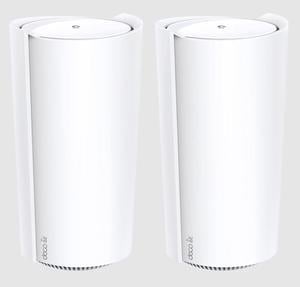- Home
- Networking
- Wireless Networking
- Whole Home / Mesh Wifi
Whole Home / Mesh Wifi
- In Stock
- Sold by Newegg
- New
- Make an Offer
- Brands
- Show More
- Price
- Show More
- Type
- Router & Satellite Counts
- Covered Area
- Wi-Fi Standards
- All Top Brands
- Availability
- Condition
- Current Promotion
- Sold by
- Useful Links
- New
Show More
- Customer Ratings
- & up

- Type: Mesh WiFi System
- Router & Satellite Counts: 3-Pack (3 Routers)
- Covered Area: 6,500 sq. ft.
- Other Ports: 3 x Gigabit Ports *Per Deco Unit Supports WAN/LAN auto-sensing
- Model #: Deco X55(3-Pack)
- $169.99 –
- More options from $169.99 - $213.99
- Free Shipping
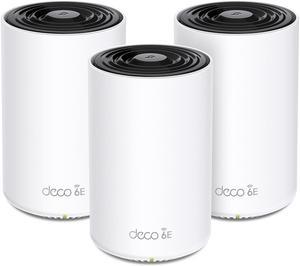
- Type: Mesh WiFi System
- Router & Satellite Counts: 3-Pack (3 Routers)
- Covered Area: 4-7+ Bedroom Houses (3-pack)
- Other Ports: 3 x Gigabit Ports *Per Deco Unit Supports WAN/LAN auto-sensing
- Model #: Deco XE75(3-pack)
- $249.99 –
- More options from $249.99 - $422.25
- Free Shipping

Get a complimentary twelve-month or six-month NordVPN subscription, click here for instructions
- Part Number: BT10(W-2-PK)
- Type: Mesh WiFi System
- Router & Satellite Counts: 2-Pack
- Covered Area: 6,000 sq. ft.
- Model #: BT10 (W-2-PK)
- $689.99 –
- More options from $689.99 - $723.22
- Free Shipping

- Type: Mesh WiFi System
- Router & Satellite Counts: 3-Pack (3 Routers)
- Covered Area: 6,500 sq. ft.
- Other Ports: 3 x Gigabit Ports *Per Deco Unit Supports WAN/LAN auto-sensing
- Model #: Deco X55(3-Pack)
- $213.99 –
- More options from $169.99 - $213.99
- $29.99 Shipping

Get a complimentary twelve-month or six-month NordVPN subscription, click here for instructions
- Part Number: 90IG08Z0-MA1N2V
- Type: Mesh WiFi System
- Router & Satellite Counts: 2-Pack
- Covered Area: 8,000 sq. ft.
- Model #: BQ16 Pro(W-2-PK)
- $1,099.99 –
- More options from $1,023.99 - $1,463.00
- Free Shipping

- Type: Mesh WiFi System
- Router & Satellite Counts: 3-Pack (1 Router, 2 Satellites)
- Covered Area: Up to 4,500 sq. ft.
- WAN Ports: Mesh WiFi 6 Router (MR60) - One (1) WAN 10/100/1000Mbps Gigabit Ethernet port
- Model #: MK63S-100NAS
- $313.99 –
- Free Shipping
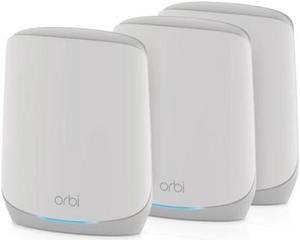
- Type: Mesh WiFi System
- Covered Area: 7,500 sq. ft.
- WAN Ports: One, 1 Gigabit Ethernet WAN port
- LAN Ports: Three, 1 Gigabit Ethernet LAN ports
- Model #: RBK753P-100NAS
- $429.99
- See price in cart
- Free Shipping
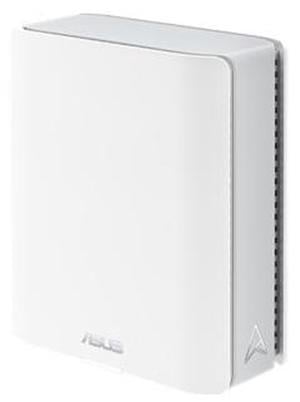
- Part Number: BT10(W-2-PK)
- Type: Mesh WiFi System
- Router & Satellite Counts: 2-Pack
- Covered Area: 6,000 sq. ft.
- Model #: BT10(W-1-PK)
- $359.99 –
- Free Shipping
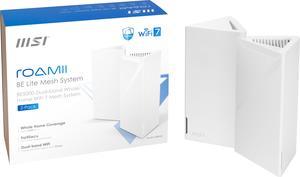
- Part Number: 302-8ZD21UU-000
- Type: Mesh WiFi System
- Router & Satellite Counts: 2-Pack (2 Routers)
- Covered Area: 5,800 sq. ft.
- Model #: Roamii BE Lite Mesh System- 2 Pack
- $259.99
- $229.99 –
- Save: 11%
- More options from $229.99 - $294.34
- Free Shipping

- Part Number: 90IG07D0-MA1A4V
- Type: Mesh WiFi System
- Router & Satellite Counts: 2-Pack
- Covered Area: 5,500 sq. ft.
- Model #: ET9 (W-2-PK)
- $349.99
- $336.49 –
- More options from $336.49 - $473.22
- Free Shipping
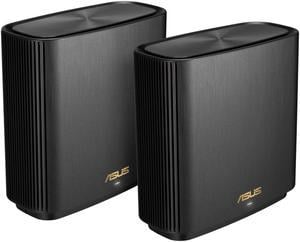
- Type: Mesh Router
- Router & Satellite Counts: 2-Pack (2 Routers)
- Covered Area: up to 5700 sq ft & 6+ rooms
- WAN Ports: RJ45 for 2.5G BaseT for WAN x 1, RJ45 for Gigabits BaseT for LAN x 3 USB 3.2 Gen 1 x 1
- Model #: XT9 (B-2-PK)
- $349.99 –
- More options from $290.97 - $455.00
- Free Shipping
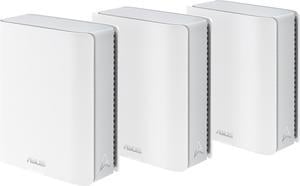
Get a complimentary twelve-month or six-month NordVPN subscription, click here for instructions
- Part Number: 90IG0940-MA1B3T
- Router & Satellite Counts: 3-Pack
- WAN Ports: Dual WAN 3G / 4G LTE Dongle 4G / 5G Auto Mobile Tethering Port Forwarding Port Triggering DMZ DDNS
- LAN Ports: DHCP Server IGMP Snooping IPTV LAN Link Aggregation Manually Assign IP Address Wake on LAN (WOL)
- Model #: BT6 (W-3-PK)
- $599.99 –
- More options from $599.99 - $609.22
- Free Shipping
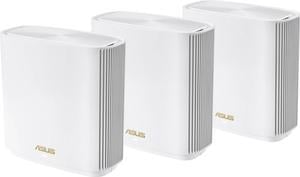
- Part Number: 90IG06S0-MA1A2V
- Type: Mesh Router
- Router & Satellite Counts: 3-Pack
- Covered Area: 7,500 sq. ft.
- Model #: ET8 (W-3-PK)
- $479.99
- $449.99 –
- Save: 6%
- More options from $439.66 - $638.22
- Free Shipping
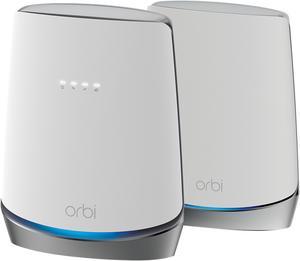
- Type: Mesh WiFi System
- LAN Ports: Orbi Router (AX4200): Four (4) 10/100/1000Mbps Gigabit Ethernet LAN ports Orbi Satellite (AX4200): Two (2) 10/100/1000Mbps Gigabit Ethernet LAN ports
- Security: Comprehensive anti-virus & data theft protection for your PC, Mac and mobile devices with NETGEAR Armor Standards-based WiFi Security (802.11i, 128-bit AES encryption with PSK) Guest WiFi Network is easy to setup separate & secure Internet access for guests
- Antenna: Six (6) high performance internal antennas with high-powered amplifiers
- Model #: CBK752-100NAS
- $299.99 –
- Free Shipping
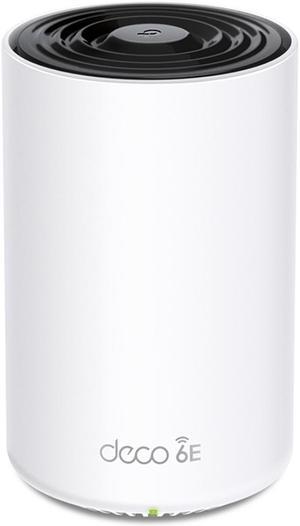
- Type: Mesh WiFi System
- Router & Satellite Counts: 1-Pack (1 Router)
- Covered Area: 1-3 Bedroom Houses
- Wi-Fi Standards: Wi-Fi 6E
- Model #: Deco XE75 Pro(1-pack)
- $179.99
- $119.99 –
- Save: 33%
- More options from $119.99 - $206.55
- Free Shipping
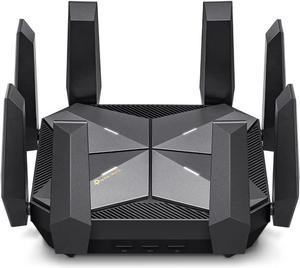
- WAN Ports: • Dynamic IP • Static IP • PPPoE • PPTP • L2TP
- Wi-Fi Standards: • IEEE 802.11ax 6 GHz, • IEEE 802.11ax/ac/n/a 5 GHz, • IEEE 802.11ax/n/b/g 2.4 GHz
- Frequency Band: AXE16000 • 6 GHz: 4804 Mbps (802.11ax) • 5 GHz-1: 4804 Mbps (802.11ax) • 5 GHz-2: 4804 Mbps (802.11ax) • 2.4 GHz: 1148 Mbps (802.11ax)
- Parental Controls: HomeShield Parental Controls Custom Profiles Professional Content Filter Library Family Time Bedtime Off Time Time Rewards Family Online Time Ranking Pause the Internet Weekly and Monthly Reports
- Model #: Archer AXE300
- $399.99 –
- More options from $399.99 - $533.99
- Free Shipping

- Part Number: B08ZK3D89L
- Type: Mesh WiFi System
- Router & Satellite Counts: 2-Pack
- Covered Area: 3,000 sq. ft.
- Model #: B08ZK3D89L
- $239.99 –
- Free Shipping
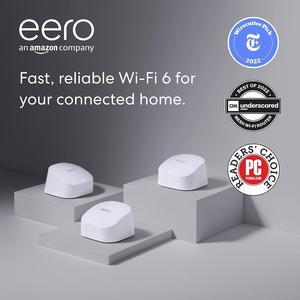
- Part Number: B085WSCTS4
- Type: Mesh WiFi System
- Router & Satellite Counts: 3-Pack (1 Router, 2 Satellites)
- Covered Area: Covers up to 5,000 sq. ft.
- Model #: B085WSCTS4
- $199.99 –
- Free Shipping
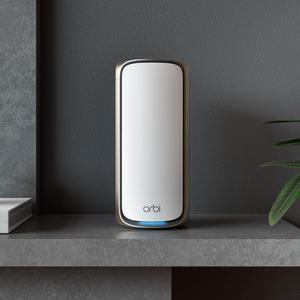
- Part Number: RBE970-100NAS
- Type: Addon Satellite
- Router & Satellite Counts: 1-Pack (1 Satellite)
- Covered Area: 3,300 sq. ft.
- Model #: RBE970-100NAS
- $799.99 –
- Free Shipping
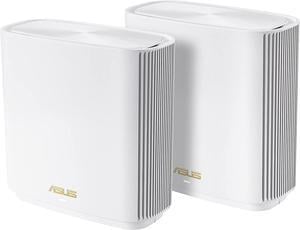
- Type: Mesh WiFi System
- Router & Satellite Counts: 2-Pack (2 Routers)
- Covered Area: 5,500 sq. ft.
- WAN Ports: 1 x 2.5Gbps
- Model #: ET8 (W-2-PK)
- $329.99 –
- Free Shipping
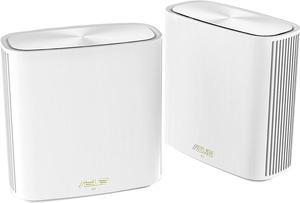
- Type: Mesh Router
- Router & Satellite Counts: 2-Pack (2 Routers)
- Covered Area: 5,400 sq. ft.
- WAN Ports: 1 x 10/100/1000M
- Model #: XD6 (W-2-PK)
- $249.99
- $249.00 –
- Free Shipping
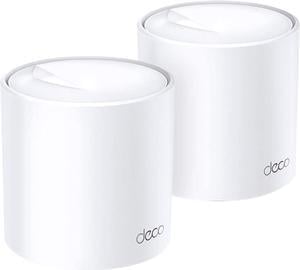
- Type: Mesh WiFi System
- Router & Satellite Counts: 2-Pack (2 Routers)
- Covered Area: 4,000 sq. ft.
- WAN Ports: 1 x 10/100/1000M
- Model #: Deco X20(2-pack)
- $109.99 –
- More options from $109.99 - $157.71
- Free Shipping

- Type: Mesh Router
- Router & Satellite Counts: 2-Pack (2 Routers)
- Covered Area: up to 5700 sq ft & 6+ rooms
- WAN Ports: RJ45 for 2.5G BaseT for WAN x 1, RJ45 for Gigabits BaseT for LAN x 3 USB 3.2 Gen 1 x 1
- Model #: XT9 (W-2-PK)
- $349.99 –
- More options from $349.99 - $389.33
- Free Shipping
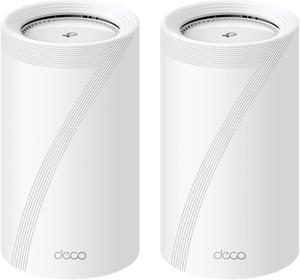
- Type: Mesh WiFi System
- Router & Satellite Counts: 2-Pack
- Covered Area: 6,000 sq. ft.
- Wi-Fi Standards: Wi-Fi 7 IEEE 802.11be/ax 6 GHz IEEE 802.11be/ax/ac/n/a 5 GHz IEEE 802.11be/ax/n/b/g 2.4 GHz
- Model #: Deco BE75(2-Pack)
- $469.99 –
- Free Shipping
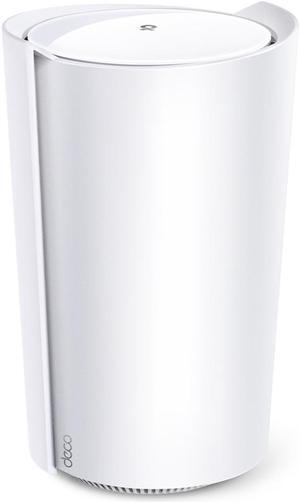
- Type: Mesh WiFi System
- Router & Satellite Counts: 1-Pack
- Covered Area: Cover up to 3,100 Sq.Ft
- Wi-Fi Standards: Wi-Fi 6
- Model #: Deco X95(1-Pack)
- $159.99
- $149.99 –
- Save: 6%
- Free Shipping
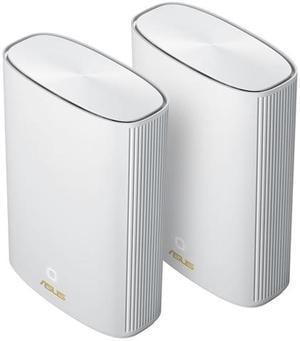
- Type: Mesh WiFi System
- Router & Satellite Counts: 2-Pack (2 Routers)
- Covered Area: 5,500 sq. ft.
- WAN Ports: 1 x 10/100/1000M
- Model #: XP4(W-2-PK)
- $229.99
- $194.99 –
- Save: 15%
- Free Shipping
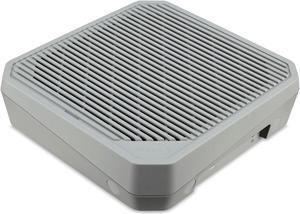
- Part Number: FF.G2FTA.002
- Type: Mesh Router
- Router & Satellite Counts: 1-Pack (1 Router)
- Covered Area: 2,500 sq. ft.
- Model #: CONNECT_W6M
- $199.99 –
- More options from $199.99 - $238.30
- Free Shipping

- Router & Satellite Counts: 3-Pack (1 Router, 2 Satellites)
- Covered Area: 5,500 sq. ft.
- Other Ports: 2 x Gigabit Ethernet Ports (WAN / LAN auto-sensing) per Deco unit
- Wi-Fi Standards: IEEE 802.11 ac/n/a 5 GHz IEEE 802.11 b/g/n 2.4 GHz
- Model #: Deco M4(3-pack)
- $135.17 –
- More options from $129.44 - $190.41
- Special Shipping
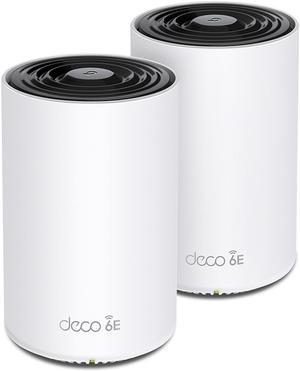
- Type: Mesh WiFi System
- Router & Satellite Counts: 2-Pack (2 Routers)
- Covered Area: 3-5 Bedroom Houses
- Wi-Fi Standards: Wi-Fi 6E
- Model #: Deco XE75 Pro(2-pack)
- $229.99
- $149.99 –
- Save: 34%
- More options from $149.99 - $294.99
- Free Shipping

- Type: Mesh WiFi System
- Router & Satellite Counts: 3-Pack (3 Routers)
- Covered Area: 5,800 sq. ft.
- WAN Ports: 1 x 10/100/1000M
- Model #: Deco X20(3-pack)
- $139.99 –
- More options from $139.99 - $208.11
- Free Shipping
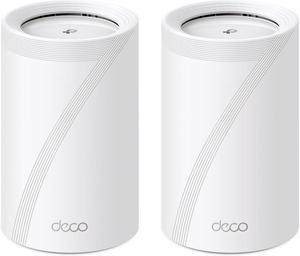
- Type: Mesh WiFi System
- Router & Satellite Counts: 2-Pack
- Covered Area: Up to a colossal 5800 sq ft
- WAN Ports: Ethernet Ports: 4x 2.5Gbps *Supports WAN/LAN auto-sensing
- Model #: Deco BE63(2-Pack)
- $319.99 –
- More options from $319.99 - $476.99
- Free Shipping

- Type: Mesh WiFi System
- Router & Satellite Counts: 2-Pack (2 Routers)
- Covered Area: 5,500 sq. ft.
- WAN Ports: 2 x Gigabit Ports *Per Deco Unit Supports WAN/LAN auto-sensing
- Model #: Deco X68(2-pack)
- $159.99 –
- More options from $159.99 - $221.54
- Free Shipping
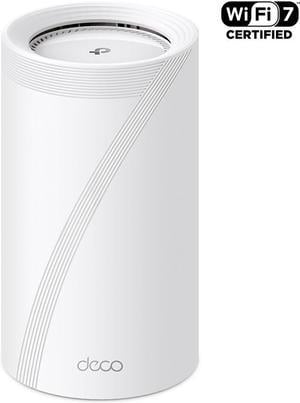
- Type: Mesh WiFi System
- Router & Satellite Counts: 1-Pack
- Other Ports: 1 x 10 Gbps 1 x 10 Gbps SFP+/RJ45 Combo 2 x 2.5 Gbps *Per Deco Unit Supports WAN/LAN auto-sensing
- Wi-Fi Standards: Wi-Fi 7
- Model #: Deco BE85(1-Pack)
- $449.99 –
- More options from $449.99 - $499.74
- Free Shipping
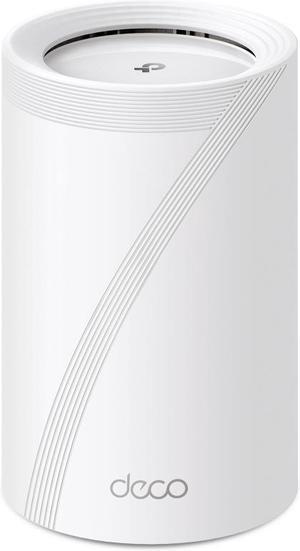
- Type: Mesh WiFi System
- Router & Satellite Counts: 1-Pack
- Covered Area: Up to a colossal 3000 sq ft
- WAN Ports: Ethernet Ports: 4x 2.5Gbps *Supports WAN/LAN auto-sensing
- Model #: Deco BE63(1-Pack)
- $209.99
- $199.98 –
- More options from $199.98 - $273.91
- Free Shipping
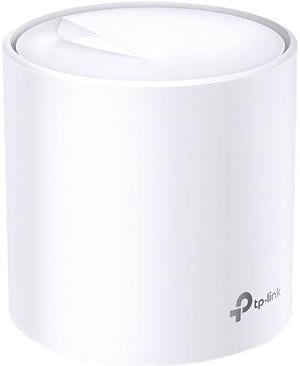
- Type: Mesh Router
- Router & Satellite Counts: 1-Pack (1 Router)
- Covered Area: 2,200 sq. ft.
- WAN Ports: 2 LAN/WAN Gigabit Ethernet Ports
- Model #: Deco X20(1-pack)
- $59.99 –
- More options from $59.99 - $90.40
- Free Shipping

- Covered Area: 6,600 sq. ft.
- WAN Ports: Dynamic IP Static IP PPPoE PPTP L2TP
- Wi-Fi Standards: Wi-Fi 7 IEEE 802.11be/ax/ac/n/a 5 GHz IEEE 802.11be/ax/n/b/g 2.4 GHz
- Wireless Data Rates: 5 GHz: 4324 Mbps (802.11be) 2.4 GHz: 688 Mbps (802.11be)
- Model #: Deco BE25(3-Pack)
- $249.98 –
- Free Shipping
- Home WiFi
- Fast WiFi?
- Extending WiFi Range
- Brands
A new generation of smart WiFi systems automate and optimize home networking, especially in larger spaces with heavy network traffic. Learn if a smart WiFi router and wireless access points make sense for your bandwidth and budget needs, and find out whether new technology like 801.11ac, MU-MIMO, and beamforming are worth it for your home network.
The ISP connection and modem is the brawn
A fast connection starts with the Internet Service Provider (ISP) line to your home. Know that a home network is never faster than the Cable, DSL, or Fiber connection you get from the ISP. Cable and DSL connections range from 25-50 MB/s rates for consumer connections. If you’re lucky enough to live where fiber is available, you may see rates upwards of 300 MB/s.
A modem converts the ISP signal into to digital bandwidth that other network components use to communicate with each other. Usually consumers rent modems from the ISP at a monthly rate, and you can save money about a year after you buy a modem on the consumer market. ISPs publish lists of compatible modems on their websites--use this as a reference to buy a modem for yourself.
The WiFi router is the brain
From the modem, the router distributes the signal to different endpoints on the home network. Today, all routers are WiFi routers that combine Ethernet connectivity (LAN ports) with a built in wireless access point (WAP). The wireless access point broadcasts a wireless network connection to endpoints on the home network.
New routers using the latest IEEE 802.11ac specifications, MU-MIMO antenna technology, that are capable of focusing in a wireless signal on specific endpoints--a process called beamforming--make a home network more dynamic and flexible when there are a lot of endpoints accessing the network in a larger home or office.
2.4 GHz and 5 Ghz are the bands
Dual band WiFi routers send out signals across two separate bands (also called spectrums) of radio frequency: one is centered at 2.4 GHz and the other at 5 GHz.
The 2.4 GHz band is used by all sorts of remote control devices--garage door openers, TV remotes, baby monitors, police scanners, et cetera--so it tends to be noisier. Network congestion impedes the connection and access feels slow. Newer laptops, phones, and tablets are built to communicate at the 5 Ghz wavelength to avoid the congestion.
The physically larger 5 GHz wavelength yields a faster data transfer, but the 2.4 GHz spectrum does have advantages. The 5 GHz band has a shorter range in open space, and has a harder time penetrating solid walls, metal doors, water pipes, heaters and aquariums—and is more susceptible to interference from electronic appliances.
Premium-quality Tri-band WiFi routers give users a 2.4 GHz channel and two 5 Ghz channels. A tri-band is advantageous when there are upwards of 15-20 endpoints vying for bandwidth on the WLAN and performance is critical for the end users. The extra 5 Ghz band is like adding a lane on a congested freeway helping everything move along.
First let’s manage expectations. A wired Ethernet connection is faster and more reliable than a WiFi signal--at least for now. So wherever performance is a priority and the endpoint is stationary—desktop PCs, network media players, high-definition smart TVs--running networking cable to these components is recommended for best performance.
Of course, tablets, smartphones, home automation sensors, and other devices that talk only over WiFi do not give that luxury. These devices are growing in number in smart WiFi networks. The average home network has eight wirelessly networked devices according to IDC, and that number undoubtedly is on the rise. In short, prepare to address network congestion with new networking components with smart WiFi automation.
WiFi router myths
Understand that performance is affected most by physical space it occupies. Where you set up the equipment at your house, and the number and nature of the endpoints on the network determine whether your connection feels fast at the endpoints. Plan and test your WiFi coverage by making a simple WiFi heat map on your PC or mobile device.
The very concept of a ‘fast WiFi router’ is somewhat mythical. That is not to say one wireless router will not outperform a similar model on the same network. The issue is networks tend to be unique unto themselves, and there are dozens of other things that affect wireless performance far more than hardware brand. This renders SKU to SKU speed comparisons rather nebulous for real-world use; still vendors love to brag about their blazing fast smart WiFi routers.
Data rate (MB/s) is half metric, half marketing
Router performance is often tied to the data rate--also called the data signaling rate (DSR) or gross bit rate--depending on which vendor is talking. Data rate is measured in megabytes per second (MB/s). Remember: No matter how fast a WiFi router claims to be, it will never “boost” a slow ISP connection. Important: The MB/s rating on the box is the maximum allowable data rate based on theoretical calculations. The actual data rate you will get depends on variables like home size and layout, network congestion, and other factors outlined below.
Current IEEE standards are 802.11ac and 802.11n
WiFi routers send and receive wireless data based on specifications set by the Institute of Electrical and Electronic Engineers (IEEE). Every few years, IEEE issues new wireless standards, taking into account technological advances that make networking hardware faster and stronger. Most routers sold today list performance specifications on the last two IEEE standards, 802.11ac and the older 802.11n.
How fast is 802.11ac? Theoretically, 802.11ac packs four times as many data streams into a 5 Ghz space than the previous generation. This gives 802.11ac routers the theoretical potential for a 7 Gbps WLAN. In reality that number is from outer space.
802.11ac networks do not yet reach 1 Gbps when put to the bench—especially if the LAN is cabled with twisted pair Cat5e and Cat6. However, it is a commonly held belief that 802.11ac equipment will outpace Ethernet within five years.
All IEEE standards are backwards compatible, which means that older endpoints will continue to work with new networking gear.
MIMO means multiple WiFi antennae
The more antennae a router or access point has, the better it is for dealing with a crowded network.
In 2009, IEEE 802.11n standardized multiple-input multiple-output (MIMO) wireless networking, which greatly increased endpoint capacity for WiFi routers. Older wireless routers and access points had a single antenna that was quickly bogged down after a handful of users joined the network. MIMO enabled deploying multiple antennas on one WAP, which helps it which sort and compartmentalize endpoints, handle more volume, and feel faster for end users.
MIMO antennae can be outside of the WiFi router or WAP chassis, or housed inside. The number of WiFi router antennas are specified on the networking product pages.
MU-MIMO further optimizes antennae
One of newest technologies on the consumer market, MU-MIMO stands for multi-user multiple-input multiple-output, and is a refinement to how WAP antennae communicate with multiple endpoints. In short, it’s an efficiency proposition--a MU-MIMO-capable smart WiFi router can coordinate the same network traffic with four antennae instead of six, eight, or more radios found on MIMO routers.
Additionally, MU-MIMO WiFi routers with beamforming capability give users added control over allocation of the wireless signal, allowing automated dynamic prioritization (stream focus) for specified endpoints in set circumstances.
If a home is larger than 1,250 square feet or has two floors or more, the wireless connection will not reach the entire house. There are several components that extend the wireless range beyond the limits of a single WiFi router.
Smart WiFi Networks
Known as smart Wifi, the latest home network solutions bundle together a WiFi router and packs of two or three range extenders. The system is designed to automate and optimize a wireless signal in a larger home. Placed strategically, the components create something similar to the mesh network design found in commercial-grade WLAN setups, wherein multiple access points share a service set identifier (SSID) and users are connected to the same network no matter where they are in the building.
The cool part is you can walk from one end of your home to the other streaming data on your device, pulling data from the from the nearest range extender, without having to change networks. The firmware in the smart networking components automates this for the user, and allows for manual fine-tuning of bandwidth allocation via mobile app or web browser.
Traditional WiFi Options
If overhauling your network with smart WiFi isn’t for you, there are other options for extending a wireless signal in a more piecemeal fashion:
- Power over Ethernet (PoE) Wireless Access Points
- Traditional Range Extenders
- Powerline Adapters
Bundled smart WiFi solutions are latest trend in home networking. It contains a MU-MIMO-capable 802.11ac WiFi router with one, two, or three range extenders, which can be monitored and configured on a smartphone or browser. Choosing an app that suits your UI preferences should be a top consideration when you buy smart networking components.
Linksys MAX-STREAM
Linksys MAX-STREAM system comes with a dual-band 801.11ac WiFi router and one or two RE7000 range extenders. The entry level package features the AC1900 router model; the mid-range features the AC2600; and the high-end comes with the AC5400 tri-band router. The Linksys smart WiFi app gives guests access to the home network via text. The app configures parental controls for safe browsing, and can monitor and prioritize bandwidth usage throughout the home.
Ubiquiti AmpliFi
Known for its commercial grade networking products, Ubiquiti AmpliFi marks its foray into the home network space. The AmpliFi system features an 802.11AC router and multiple self-configuring range extenders. The AmpliFI HD is built for high density systems with a router and two range extenders, called wireless mesh points by the vendor. An attractive LCD display on the chassis monitors network throughput.
NETGEAR Orbi
Orbi RBK50, the NETGEAR smart WiFi system, comes with a high-performance tri-band router and a powerhouse range extender can cover a home of 4000 square feet with 802.11ac coverage. The satellite unit comes with four additional LAN ports for additional Ethernet connectivity.
Eero
Eero wireless access points offer a router-less approach to WLAN. Sold in packs of three APs, install the mother unit near the modem and connect via Ethernet cable. Plug the other two satellite APs in a wall socket within 40 feet of the mother unit. This gives a moderate-to-large home a single SSID network with smart switchover when carrying a connected device throughout the home. Each AP has LAN ports; the AP next to the modem will offer great data rates for a LAN connection.
Bestselling Whole Home / Mesh Wifi Reviews:
“ The WiFi signal has strong penetration, and the mesh network can cover the whole house, including the backyard and the front yard. ”
MSI Roamii BE Lite Mesh System - 2 Pack (WiFi 7, BE 5000, Up to 5,800 sq.ft. of Coverage, Supporting 120+ Devices, 2.5Gbps Ethernet Port, MU-MIMO MLO)“ I just updated to 2 gigabit down and 2 gigabit up fiber and I wanted a mesh WiFi system that could match those speeds. ”
TP-Link Deco AXE5400 Tri-Band WiFi 6E Mesh System (Deco XE75 Pro) - 2.5G WAN/LAN Port, Covers up to 5500 Sq.Ft, Replaces WiFi Router and Extender, AI-Driven Mesh, New 6GHz Band, 2-Pack“ My current system of three nodes easily covers a 2 story, 3500 sf house with full bars. ”
TP-Link Deco AXE5400 Tri-Band WiFi 6E Mesh System (Deco XE75 Pro) - 2.5G WAN/LAN Port, Covers up to 5500 Sq.Ft, Replaces WiFi Router and Extender, AI-Driven Mesh, New 6GHz Band, 2-Pack“ I used the DECO X55 (3-pack) as router and mesh wifi for a customer with a large house, over 4500 sq ft on two floors, plus a need for coverage in both the front and back yards for security cameras. ”
TP-Link AX3000 Whole Home Mesh WiFi 6 System, Dual-Band with Smart Antennas, MU-MIMO, HomeShield Security Deco X55(3-Pack)“ So I would HIGHLY RECOMMEND THIS MESH SYSTEM!!!! ”
TP-Link Deco Powerline Mesh WiFi 6 System (Deco PX50), Covers up to 6,500 sq.ft, Replaces Routers and Extenders, Signal Through Walls and Floors, Works with Amazon Alexa and Google Home, 3-Pack“ Whole house Wi-Fi without any signal loss. ”
TP-Link Deco XE75(3-pack) AXE5400 Tri-Band Mesh Wi-Fi 6E System White“ I purchased this system to improve the Wi-Fi in the whole house and I was not disappointment. ”
ASUS ZenWiFi AX Whole-Home Tri-band Mesh WiFi 6 System (XT8) - 2 pack, Coverage up to 5,500 sq.ft or 6+rooms, 6.6Gbps, WiFi, 3 SSIDs, life-time free network security and parental controls, 2.5G port





